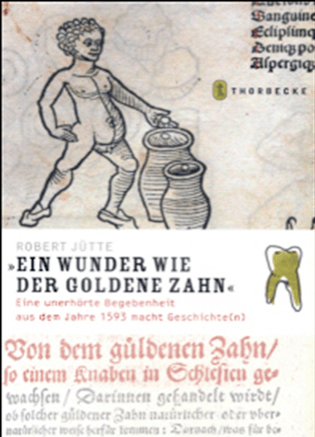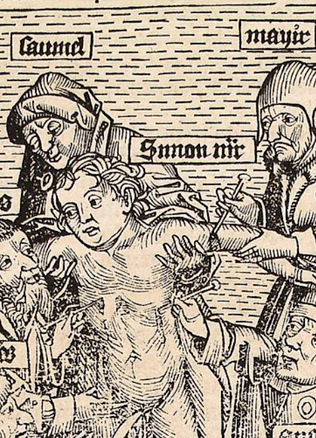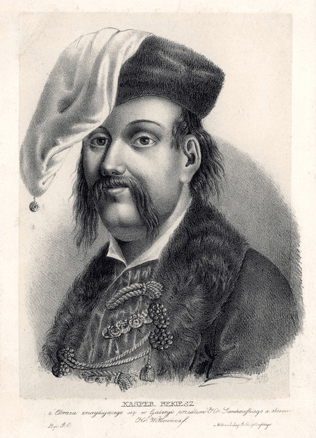Algirdas’ Campaign to Moscow Through the Eyes of 16th century Chroniclers
The story of the Lithuanian spear
The campaign was described in the 16th century in the Bychowiec Chronicle and Evreinov’s copy of the Second Redaction. We read how the Muscovite Grand Duke Dmitrij “suddenly, and without cause, he discontinued relations of peace and friendship, and sent a messenger to Algirdas, with a declaration of war. “My lord sends you fire and a sword, and bids me tell you this: ‘I will be in your lands and take them, after the bright spring, after the quiet summer’. So Grand Duke Algirdas drew flint and tinder from a velvet bag, and, striking fire onto the tinder gave it to the messenger, saying, ‘Give this to your ruler and tell him that we, Lithuanians, already possess fire, and as for his threat to set foot in my lands after a bright spring and a quiet summer, tell him this: As God wills, I, Algirdas, will be in Moscow at Easter time, and will greet him with a red egg, my spear piercing his shield, and with the help of God I will thrust my spear against the walls of Moscow. For it is not the warrior who plans to fight only at a convenient time, but he who is willing to join in battle at the most inconvenient moment, who will demonstrate his martial resolve to his enemy.’”
Releasing the messenger, he called up his Lithuanian and Rus armies, and, not delaying, marched from Vitebsk toward Moscow. And on the very morning of Easter, as the Grand Duke of Moscow, with his escort of nobles and princes, exited the church after Resurrection devotions, Grand Duke Algirdas with all his forces, banners and flags unfurled, appeared on Pasveikinimo (Greeting) Hill.”
Further on this story ends with the humiliation of the Muscovite duke and making of peace. Algirdas, who merited a large war plunder, moved the border “to Mozhaysk and Kolomna,” returning triumphantly to Lithuania. Before this, he kept his promise of putting his spear ion the walls of the Kremlin in Moscow as a sign of victory. After having done this, Algirdas exclaimed “Remember, Muscovite grand duke, that a Lithuanian spear stood near Moscow!”
This last quote is suitable for remembering the popular theory of “places of memory,” i.e. important events and objects for the collective memory. In ancient Lithuania, this was one of the most popular tales. This famous gesture by Algirdas experienced interesting metamorphoses in the works by various authors: it was transformed according to the cultural canons and historiographical ideas of a particular era. Thus, Algirdas broke his spear in the walls of the Kremlin like a knight from the West (Maciej Stryjkowski), thrust it into the gates of the Kremlin (Albert Wijuk Kojałowicz), and in the end pulled out a sword.
The legend emboldens one to fight
The tale was recorded in the 16th century chronicles. At the time, the situation was drastically different from what was depicted in the chronicles of Algirdas’ time: after a peaceful 15th century, the Muscovite nation, which grew in strength during a peaceful 15th century, joined more than one-fourth of the GDL’s territory to it at the turn of the 16th century., and in 1514 occupied the strategically important city of Smolensk. In 1522 a truce was made between the Lithuanians and Muscovites, however both countries knew it would not last long.
Scholars have determined that similar stories most often are made in order to embolden one’s own people and gather them for revenge.
Proof that the illusions of revenge were fostered in the government of the GDL is shown by the unsuccessful attack of Moscow organised by the Lithuanians in 1534-1535. As GDL Chancellor and Vilnius Voivode Albertas Goštautas wrote in a letter to Prussian Duke Albrecht in January 1534, there was a favourable occasion to take back lands they had lost upon the death of Grand Prince of Moscow Vasili III, and it was precisely in Goštautas’ milieu that the Lithuanian Chronicles were written.
Let’s get back to the text. What were its sources? There are three known campaigns to Moscow by Algirdas in 1368, 1370, and 1372. Algirdas organised them in wanting to defend his brother-in-law Mikhail, the duke of Tver, from Moscow and stop Moscow’s increasing strength. They reached Moscow during the first and second campaigns, which took place in later autumn and winter, but the Kremlin withstood them. The third campaign, which took place in summer, was not successful. In the spring after Easter (1372) a separate raid was organised by Kęstutis and Andrius Algirdaitis to territories north of Moscow. Finally, a truce was made in 1372, which preserved the status quo.
Chroniclers read the stories of the older chronicles about the above-mentioned campaigns, however they melded them into one rather freely. Today this kind of behaviour with historical information seems drastic, however it was widespread in the 16th century. They strove to provide a greater forcefulness to the story with these “generalisations.” Perhaps the researchers who said this story is a legend born among soldiers are correct. After all, Goštautas was a military leader who had taken part in campaigns, and the people around him should not have lacked coarse military humour, whom the phrase “kissing […] through the shield with a spear,” (these weapons were widely used not only in the 14th century, but also in the 16th century) could be attributed to.
Algirdas’ campaigns were always remembered – there was an “Algirdas Road” that was known in the eastern part of present-day Belarus still in the 19th century. In oral tradition, the historical events are preserved not in an accurate way, but in a transformed form, which is why it is hard to carry out research on the relationship between oral and written traditions.
The Polish version of the story
Chroniclers followed certain historiographical examples. The story about Algirdas’ campaign reminds of the Polish chronicle that depicted the Kiev campaigns of two leaders – Bolesław I the Brave and his great-grandson Bolesław II (in 1018 and 1069 respectively). Though the sign of “pressing against the spear,” which meant the occupying of a city, was adopted from traditions of the ancient Rus’ (which itself came from Byzantium), it’s worth remembering the sword notches of Bolesław I on Kiev’s Golden Gates that were described in Polish chronicles. The chronicle is linked with the Polish chronicles to the theme of “moving borders” as it is Bolesław I who is said to have moved the eastern border all the way to the Golden Gates of Kiev or (according to Jan Długosz) through the River Dnieper that flows through the city.
Do You Know?
Between 16th century GDL soldiers, the saying “kissing […] through the shield with a spear” was widespread, which meant the trouncing of a foe. In a 16th century chronicle that describes a campaign to Moscow, it is said this phrase comes from the lips of Grand Duke Algirdas.
By the way, the Szczerbiec sword, or “the Notched Sword”, which is thought to have made a notch in the Golden Gates, was used in the coronation ceremonies of Polish rulers. The mythology behind this sword must have been known in Lithuania due to the joint claims on Ukrainian lands that Polish rulers and Polish nobles had based on this mythology, land that had belonged to the GDL until the Union of Lublin. In 1569 the Polish claims came to fruition. Thus, we can say that the myth of the Polish myth of Bolesław triumphed, however the story of Algirdas’ campaign to Moscow remained a cornerstone of Lithuanian culture.
Literature: Lietuvos metraštis. Bychovco kronika, vertė, įvadą ir paaiškinimus parašė R. Jasas, Vilnius, 1971, p. 78–79.
Kęstutis Gudmantas



